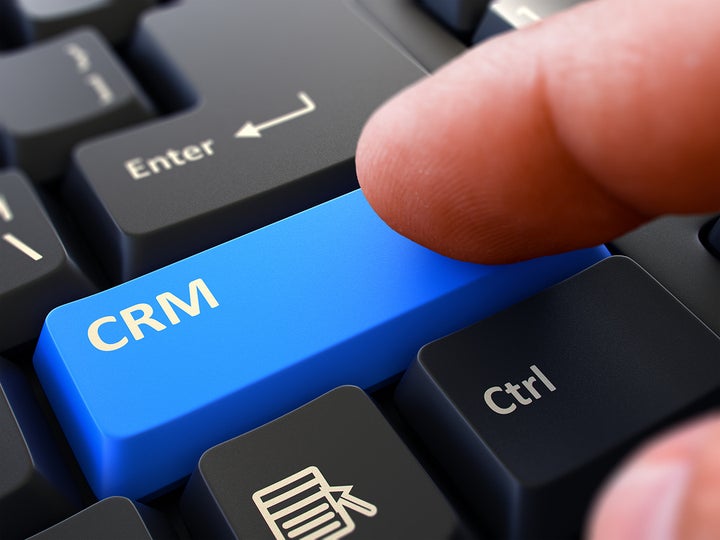
Customer relationship management, or CRM, has been a concept utilized in one way or another by business people as far back as the market economies of the ancient Roman Republic. Businesses would live and die by how customers perceived and interacted with them 2,000 years ago. And that remains true today.
While it is unrealistic to compare the difficulty of running businesses two millennia ago to running one online today, one thing's for sure: The level of complexity involved in managing customer relationships as well as remaining competitive has never been higher. E-commerce, for example, has created an environment where retailers compete for every convertible click. Even the slightest difference in public perception can mean the difference between thousands of customers either going to you or your competitor.
At the top of the e-tail food chain is Amazon. Here, more than 2 million sellers offer more than 4 billion products for sale on any given day. Roughly 77% of them are multi-channel sellers, meaning that they are selling on their own webstore and via other marketplaces. Combined, these merchants have helped make Amazon more valuable than Costco, Target and Wal-Mart... combined.
To date, one of the best methods for cultivating a loyal customer base and growing it is to implement a winning customer relationship strategy. To that end, we are going to cover eight key elements of a successful Amazon e-commerce CRM implementation for online retailers and marketers.
1. Lead Nurturing
Understanding the path your customers are taking through your sales funnel is of the utmost importance. Guiding prospects through the funnel into ultimately making a purchase is how your business stays alive and thrives. Understanding your funnel using cross-channel Amazon CRM tools will enable you to find out where you are losing potential customers and will also help you figure out why purchases are ultimately made. Successfully leveraging this data can create dramatic improvements in your conversion rates, too.
2. Data Collection
Data collection by itself is only a means to an end. However, the benefits of those “ends” are perhaps the greatest thing CRM has to offer. We will get into more specifics under customer trends, trend based sales and analytics. But suffice to say, being able to collect data via your sales channels and leverage it to improve your business is by far the most efficient method to improve growth in sales and customer retention. Accurate data lets you hone every aspect of your business into connecting with the prospects that stand to make you the most profits.
3. Customer Trends
Customer trends are one of the best ways to successfully plan your product lineup and predict the demand and drop-off for certain items. To do this successfully, though, requires a large assortment of data (in many cases going back years). Some companies choose to purchase expensive price prediction software or data sets that enable them to cultivate this data into actionable information. But this is not the only option.
With CRM for e-commerce, you can link software up directly to your sales channels. Over time, you will gain a vast amount of insight into your customer base that will allow you to effectively plan for yearly and seasonal trends and buying habits. This data can be used monitor all aspects of your business; from return patterns to primary customer discovery locations.
4. Deeper Analytics
Tying in with customer trends are the ever-critical analytics. Without a CRM system in place that allows you to go deeper into who is buying from you, and that tells you why they are, from where and when (as well as dozens of other relevant factors), you will have to resort to the core site functions. Sadly, platforms like Amazon or WooCommerce rarely go past telling you when something was bought/shipped and what it was.
A more robust set of analytic tools will allow you to understand your audience better. This means you can better tailor campaigns, offerings and any other touch points directly to them. This results in positive increases across the board. It also boosts conversions, overall sales numbers, audience size, conversion rates and nearly everything else. The better you understand why your customers are doing what they are doing, the sooner you can begin to guide these decisions.
5. Trend Based Sales
One of the most important ways to leverage all of this data we have been talking about is by using it to more effectively coordinate your advertising and marketing strategies, in particular on a trending timetable. Once you really start to understand your customers, you will begin to see patterns in their weekly, seasonal and yearly buying habits. Coordinating these trends with more efficient messaging will allow you to gain tremendous amounts of traction among your target demographic.
This data can also be combined to inform you of when the best times to offer certain sales, discounts and deals will be. Such invaluable information will boost the effectiveness of everything from your email campaigns to your on-site calls-to-action.
6. Connecting The Team
Optimizing how you and your team operate can directly translate into improved operational and team efficiency, better communication and more successful results. While third-party systems like Teamviewer or Skype are fantastic tools, they don’t allow you to seamlessly connect your data and business information into your team discussions. But the right CRM solution with tagging that allows you to share, highlight and interact with data throughout the team (using real-time chat functionality) can ensure that everyone is on the same page.
7. Task Management
E-commerce CRM software lets you use this team connection to delegate tasks, tag co-workers and ensure proper information and accountability is always tracked and available. It is a hybrid of project management solutions combined with an efficient suite of customer relationship tools. Having a single hub that addresses task management reduces miscommunication and improves team efficiency overall is mandatory in today’s world. Think Slack meets Microsoft Teams with splashes of Zoho and Agile and you’ll have a good idea of what the next evolution of CRM software should offer as far as features and internal functionality are concerned.
8. Product Returns
Customer returns have a direct correlation with the loyalty base of your clients. The easier you make the process, the more likely they are to shop with you again. You also want to eliminate as many returns as possible. Both goals can be accomplished with CRM software.
Having the right data on hand will allow you to evaluate what products are being returned and by whom, when and why. This data enables you to remove serial returners from your lists as well as develop plans for reducing the return rates of certain products; such as providing more upfront knowledge on the product, more in-depth instructions on the packaging or even tutorial videos for technical products, not to mention integrating apparel sizing apps into your standalone web store as well and integrated reviews.
As you can see, CRM is a powerful tool that gives online retailers a cutting-edge in today’s data rich and sporadic, multi-channel marketplace. Succeeding in e-commerce also requires that you sidestep pitfalls by adding the right tools to your arsenal. Make sure your playbook has a few aces up its sleeves so you can retain the competitive advantage.
About the Author
Michael Lazar is the Executive Director of Marketing at ReadyCloud, a cloud-based e-commerce CRM software solution. As an established digital marketer, Lazar’s posts are syndicated nationally in a wide variety of mediums. Connect with him on LinkedIn.
